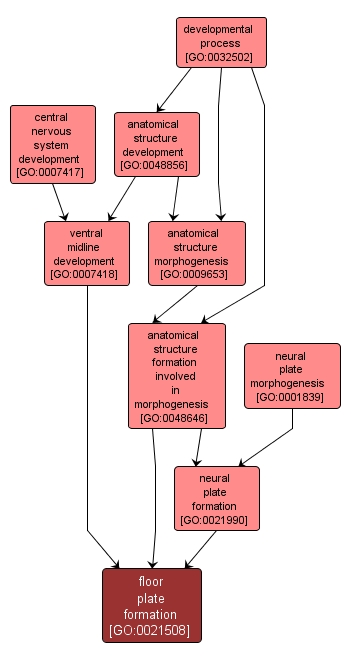GO TERM SUMMARY
|
| Name: |
floor plate formation |
| Acc: |
GO:0021508 |
| Aspect: |
Biological Process |
| Desc: |
The formation of a ventral region of glial cells in the neural tube that provides inductive signals for the specification of neuronal cell types. The floor plate is evident at the ventral midline by the neural fold stage. |
|

|
INTERACTIVE GO GRAPH
|














